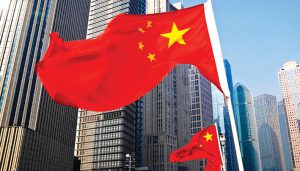BLOOMBERG
China’s manufacturing activity unexpectedly contracted in April, a sign the economic recovery remains patchy and may be struggling to sustain momentum.
The official manufacturing purchasing managers’ index (PMI) fell to 49.2 from 51.9 in March, the National Bureau of Statistics (NBS) said. The gauge dropped below the level of 50 — which signals contraction from the previous month — for the first time since December. Economists surveyed by Bloomberg had forecast 51.4.
A non-manufacturing gauge of activity in the services and construction sectors declined to 56.4 from 58.2 in March. Economists had forecast the index to hit 57. A reading above 50 indicates expansion.
“This is a mixed PMI report and suggests that China’s post-Covid recovery has somewhat lost steam and calls for continued policy support,†said Zhou Hao, chief economist at Guotai Junan International Holdings. The Communist Party’s Politburo — the top decision-making body led by President Xi Jinping —said the recovery needs continued “forceful†fiscal and monetary support due to insufficient domestic demand. That signalled a cautious approach that keeps policy largely unchanged.
The world’s second-largest economy expanded at the fastest pace in a year last quarter, driven by consumer spending as the end of Covid restrictions lifted activity. Several major banks raised their annual growth forecasts to about 6% or higher, expecting the economy to outperform Beijing’s target of around 5% growth.
As the unexpected contraction in manufacturing activity showed, there’s still uncertainty if the recovery can be sustained. The property sector’s rebound has only just started, while investment has continued to fall. Industrial firms are struggling to turn a profit. Youth unemployment is also hovering near record highs.
“The recovery of domestic demand is not broad based,†and while travel may be up, property market activities seem still muted, and joblessness is high, said Zhang Zhiwei, chief economist at Pinpoint Asset Management Ltd. “These mixed signals will likely keep the pressure on the government to continue its supportive fiscal and monetary policies†in the second quarter, he said.
The new orders subindex under the manufacturing PMI was at 48.8, falling into contraction territory for the first time since December when Chinese authorities abruptly ended Covid restrictions and hundreds of millions were infected nationwide. The sub-gauges for new export orders and manufacturing employment also contracted.
The drop in the manufacturing gauge is “due to factors including insufficient market demand and the high base in the first quarter when the manufacturing industry rapidly recovered,†NBS senior statistician Zhao Qinghe said.
 The Gulf Time Newspaper One of the finest business newspapers in the UAE brought to you by our professional writers and editors.
The Gulf Time Newspaper One of the finest business newspapers in the UAE brought to you by our professional writers and editors.
